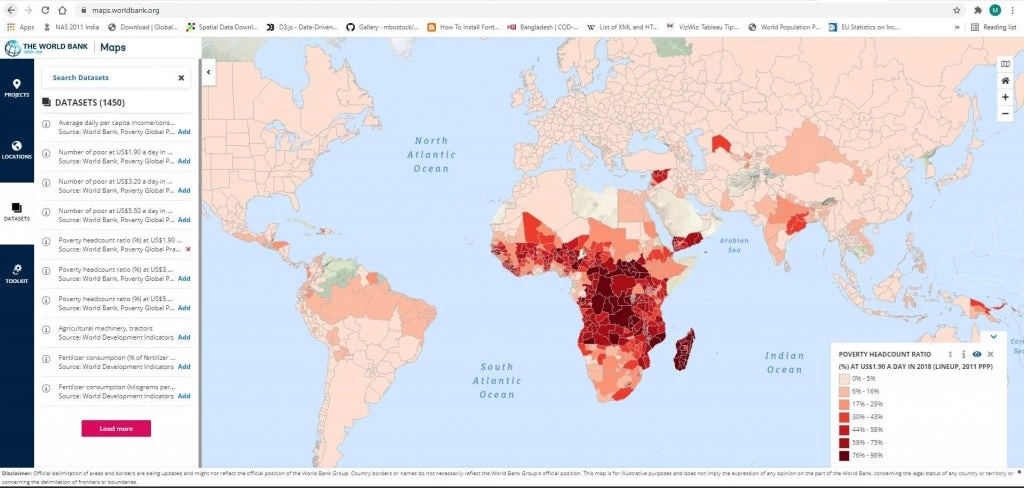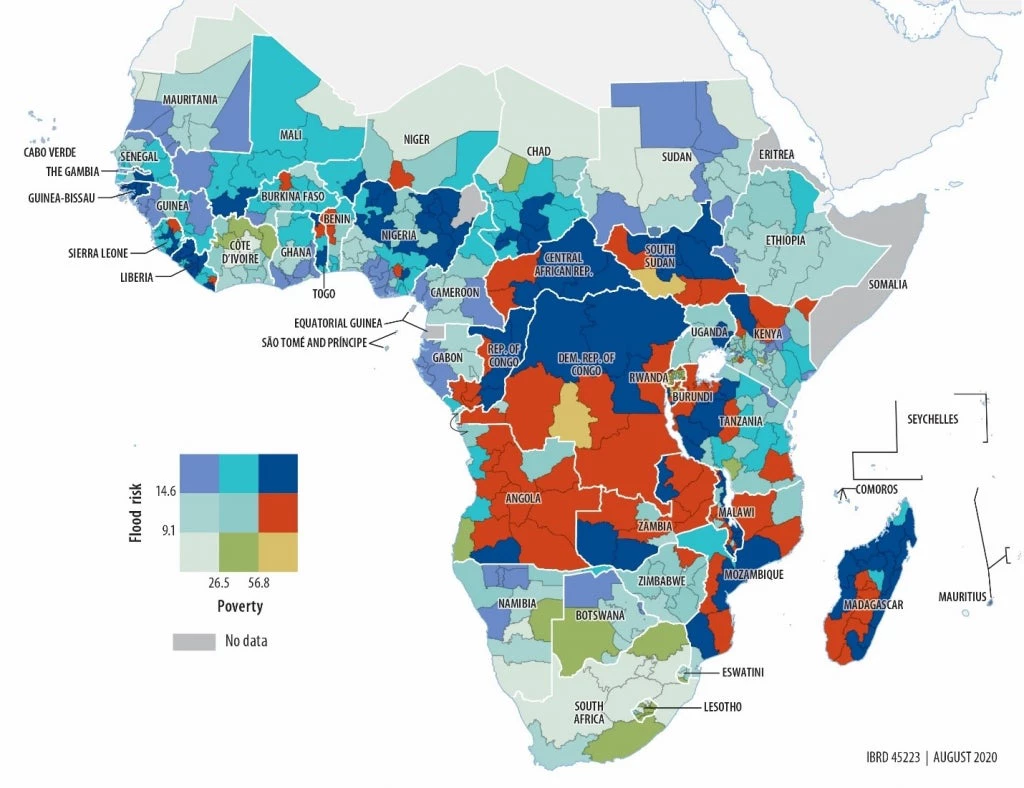
The second edition of the World Bank’s Global Subnational Atlas of Poverty (GSAP) includes subnational poverty rates for approximately 1,800 subregions across 166 economies. The ability to disaggregate national poverty rates by region is incredibly powerful, increasing the volume of poverty information ten-fold.
Sub-regions highlighted in the GSAP are based on representative regions from official household surveys. For many countries, subnational regions are administrative boundary level 1 areas, corresponding to provinces or states (the first level below the national level). For other countries, regions in the GSAP are country-specific based on both administrative boundaries and the survey design. For visualization in the GSAP, regions must be able to be represented in a cartographic form. For example, if representative regions in a survey are “urban” and “rural,” these cannot be accurately shown on a map. Please refer to the entry in the World Bank’s Development Data Hub for detailed documentation and the data.
Data granularity, however, is not available in all cases. In 33 economies, poverty rates are available only at the national level. In some cases, the economies are inherently too small to disaggregate by region (i.e. Tonga and Tuvalu). In others, there are no available geographic variables (i.e. Turkey and Turkmenistan).
The current edition of the GSAP is available at maps.worldbank.org. To access the data, go to Datasets and add in the GSAP data layers. Compared to the first edition, the number of sub-regions in the second edition has increased from approximately 1,600 to 1,800 areas. This is in part due to our better understanding of the survey representativeness in some cases, and in other cases our ability to secure more detailed data or boundary files.
In this edition, the 2018 lineup estimates are presented and consistent with the global poverty methodology (September 2020 vintage). For each country, subnational poverty estimates aggregate up to the national estimate. The following indicators are available in the platforms (maps.worldbank.org and Development Data Hub):
- Number of poor at $1.90 a day in 2018 (lineup, 2011 PPP)
- Number of poor at $3.20 a day in 2018 (lineup, 2011 PPP)
- Number of poor at $5.50 a day in 2018 (lineup, 2011 PPP)
- Poverty headcount ratio (%) at $1.90 a day in 2018 (lineup, 2011 PPP)
- Poverty headcount ratio (%) at $3.20 a day in 2018 (lineup, 2011 PPP)
- Poverty headcount ratio (%) at $5.50 a day in 2018 (lineup, 2011 PPP)
- Average daily per capita income/consumption in 2018 (lineup, 2011 PPP)
The World Bank’s GSAP has been used for some cross-sector studies, but its potential has not yet been fully exploited. The analysis in the 2020 Poverty & Shared Prosperity flagship report showed that there are strong spatial correlations of poverty with both climate and conflict with further in-depth analysis available in the climate background paper and the conflict background paper. We invite researchers to utilize the GSAP as well as help us improve its granularity and precision. An illustration of an application of GSAP on Poverty headcount at $1.90/day and Flood Risk is presented below in Figure 1.
Figure 1: Joint Distribution of Poverty and Flood Risk in Sub-Saharan Africa
The World Bank’s Global Subnational Atlas of Poverty is a core data product produced by the Poverty & Equity Global Practice. For questions about the Global Subnational Atlas of Poverty, please contact Data for Goals (D4G) at data4goals@worldbank.org.






Join the Conversation